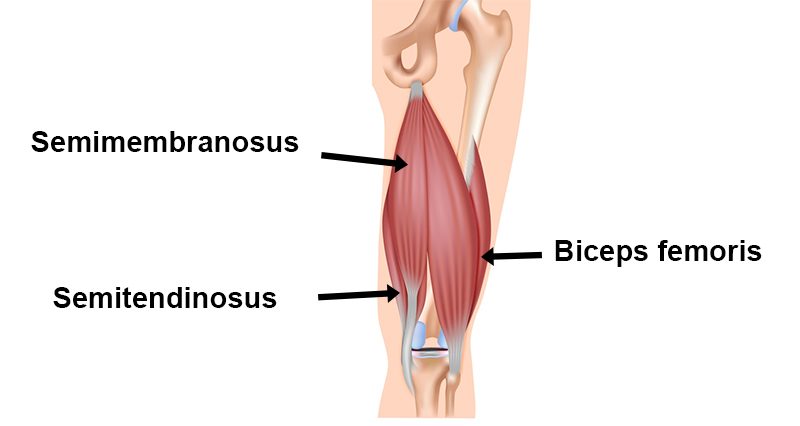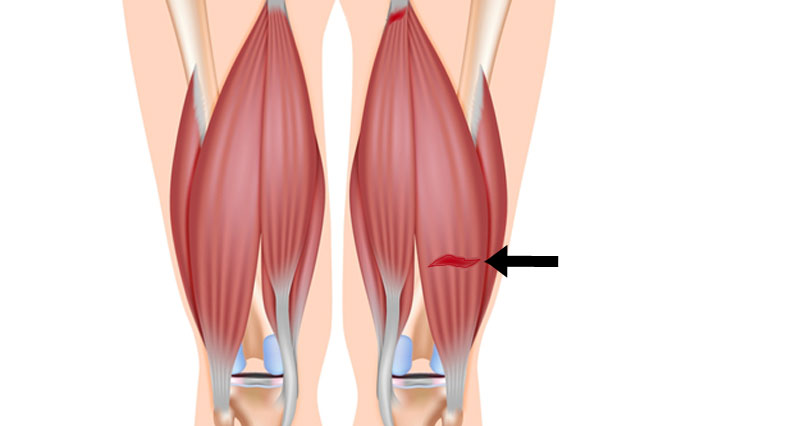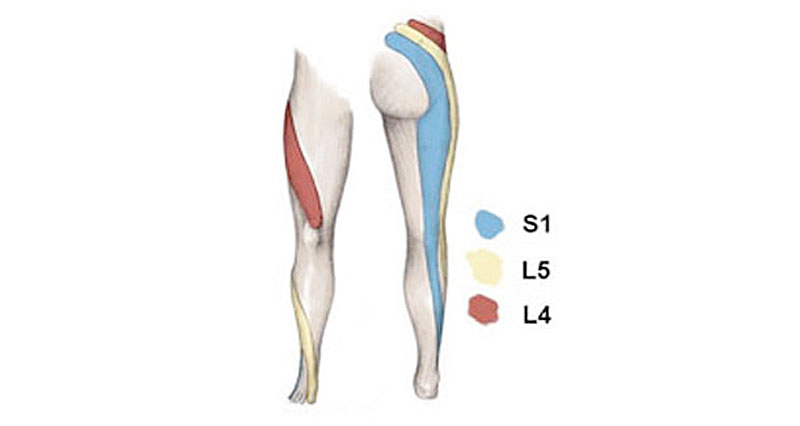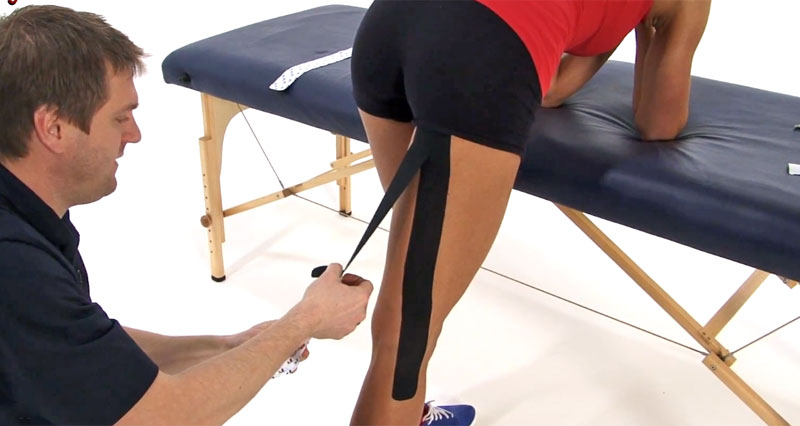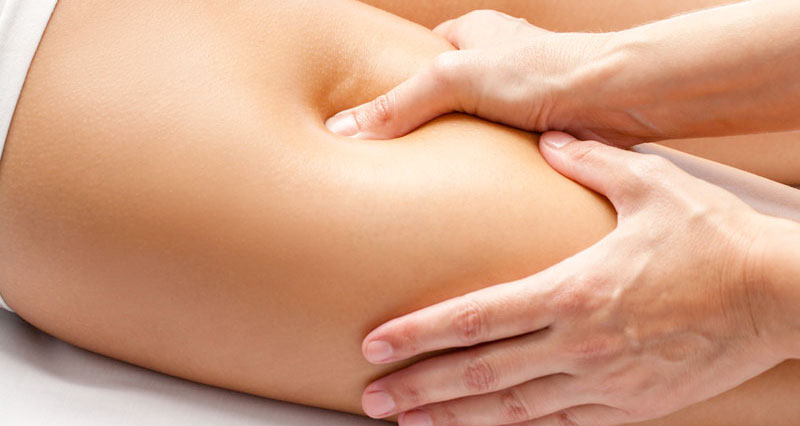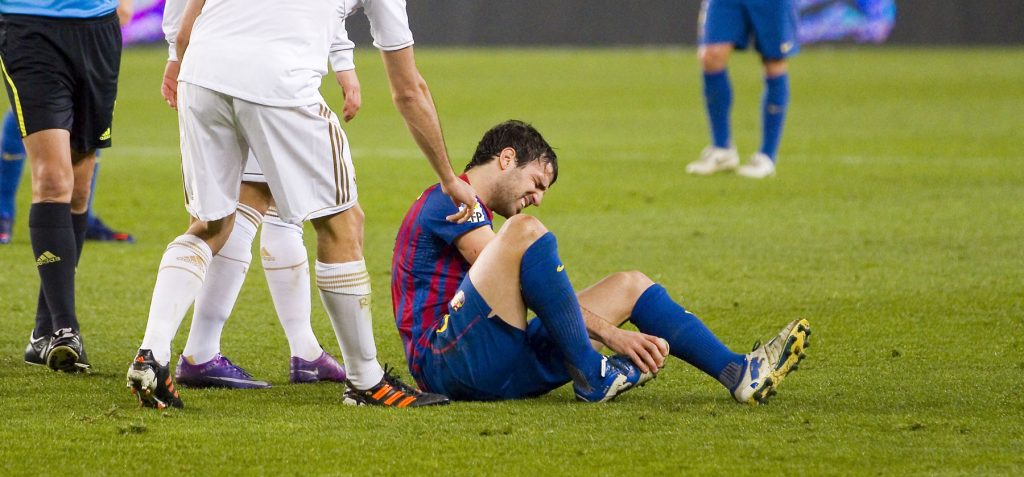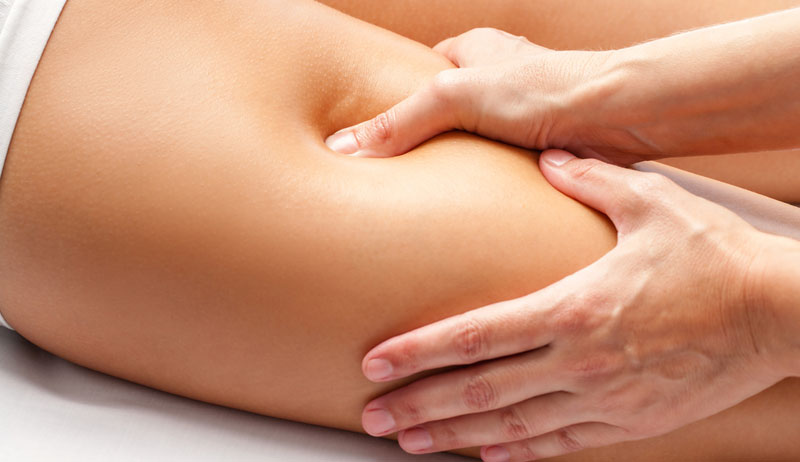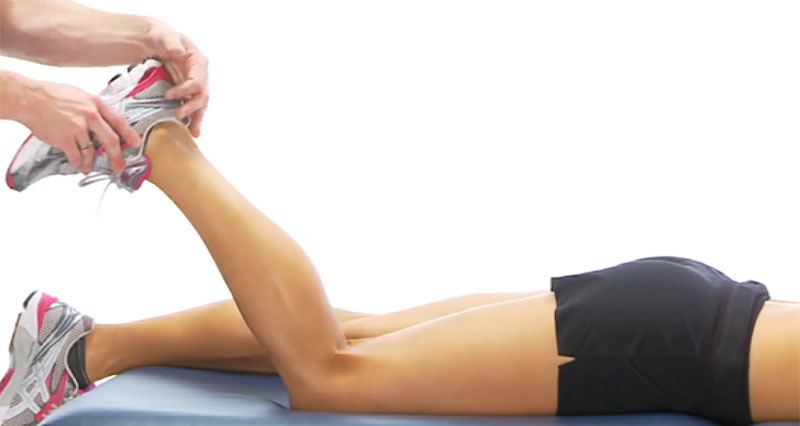The hamstring muscles at the back of the thigh consist of the biceps femoris, semitendinosus and semimembranosus. They are important muscles for walking and running in particular. They work concentrically when bending the knee as it comes through and upwards. Then they work eccentrically to slow the lower leg down. As a result, hamstring strains are common in sport.
Semitendinosus
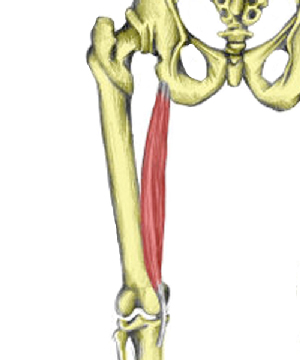
Origin and insertion
The semitendinosus originates at the Ischial tuberosity at the bottom of the pelvis and inserts into the upper medial (inside) surface of the tibia (thigh bone).
Joint actions
The semitendinosus extends the hip (moves the leg backwards) and rotates the hip inwards when the knee is flexed (bent).
Innervation
The muscle is activated by the tibial part of the sciatic nerve. The semitendinosus is used when walking and running to bend the knee.
Semimembranosus
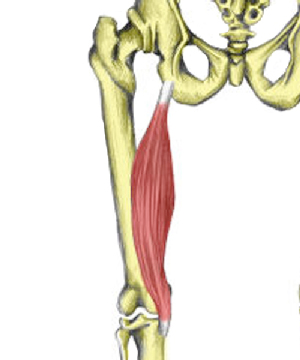
Semimembranosus is the most medial of the three hamstring muscles. Chronically tight hamstrings are often a contributory factor to lower back pain and knee pain.
Origin and insertion
The semimembranosus originates at the ischial tuberosity as the bottom of the pelvis and inserts at the inside back of the shin bone, or to be specific, the posterior part of the medical condyle of the tibia.
Joint actions
The movements created by the semimembranosus are the same as the semitendinosus. It extends the hip (moves the leg backwards) and rotates the hip inwards when the knee is flexed (bent).
Innervation
The tibial part of the sciatic nerve innervates the muscle, the same as for the semitendinosus.
Biceps Femoris
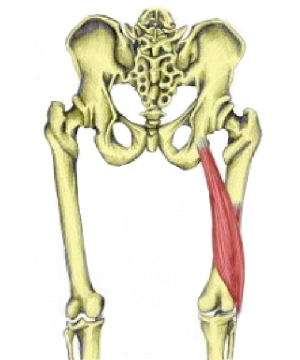
Biceps femoris is often described as having a long head (the attachment from the ischium) and a short head (attached to the femur). It is the most lateral (outside of the hamstring muscles).
Origin and insertion
The biceps femoruis muscle has two heads. One head originates at the ischial tuberosity and the other at the outside lower half of the femur (thigh bone). It inserts into the outside top of the thigh bone (lateral condyle of the femur) as well as the top of the fibula.
Joint actions
The biceps femoris muscle extends the hip and flexes the knee joint, the same as the other two hamstring muscles. It also rotates the knee and hip outwards.
Innervation
Both heads of the biceps femoris receive their innervation from the sciatic nerve.
Hamstring muscle injuries
The following are common hamstring injuries:
Hamstring strain
A hamstring strain or pulled hamstring is a tear to any of the hamstring muscles. It is common in sports, especially sprinting and kicking sports. Symptoms consist of sudden sharp pain at the back of the thigh and injuries range from mild to severe.
Hamstring contusion
A hamstring contusion is caused by a direct blow or trauma to the muscle, often crushing it against the bone. Symptoms include pain, swelling and sometimes bruising. Although contusions sometimes may not be severe, it is important to treat them properly with rest and cold therapy. This avoids complications such as Myositis ossificans where bone starts to grow within the muscle.
Hamstring muscle exercises
Strengthening exercises for the hamstring involve bending the knee against resistance:
- Hamstring curl
- Nordic curl
Stretching exercises include:
- Sitting hamstring stretch.
- Standing hamstring stretch.
